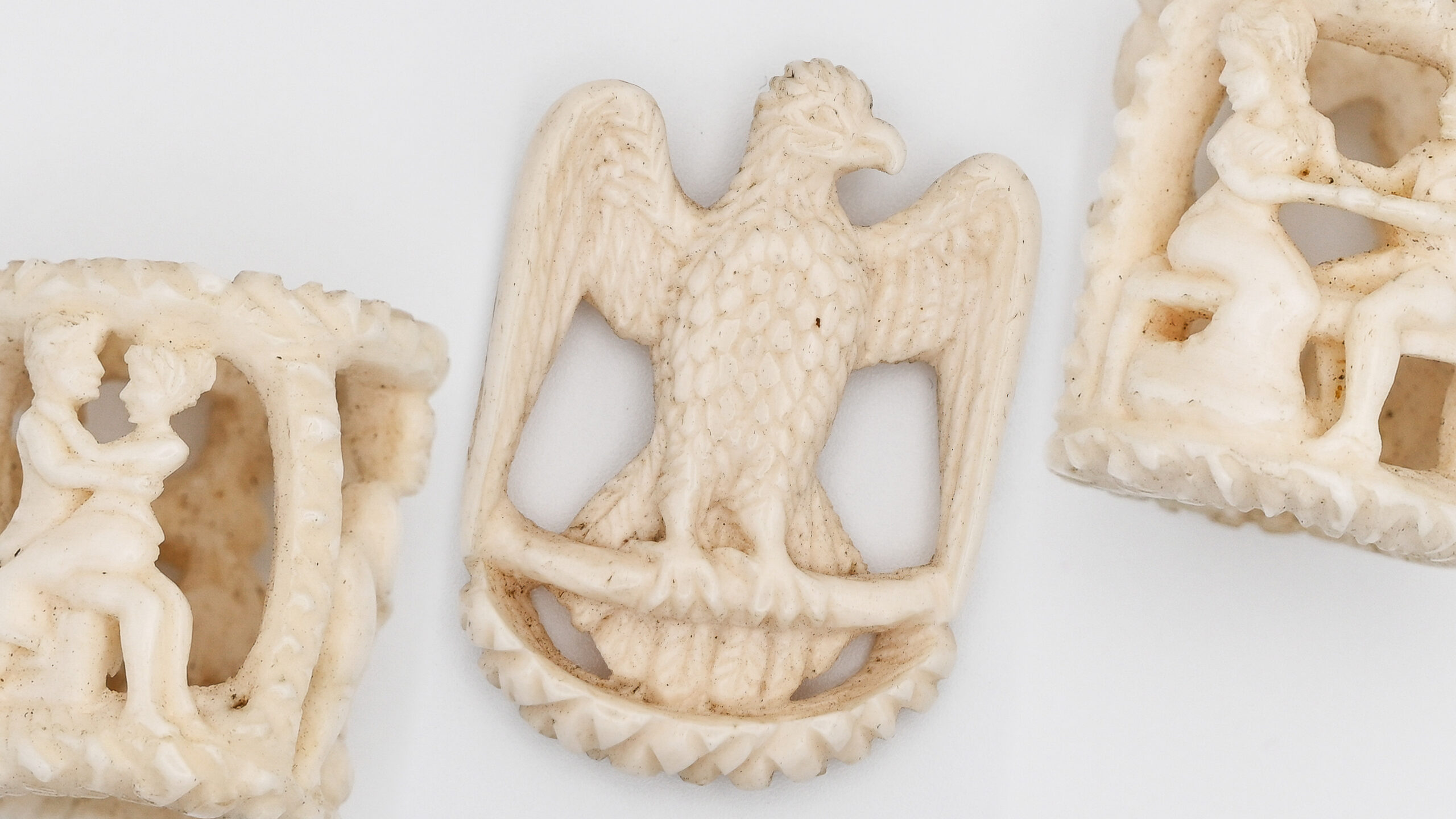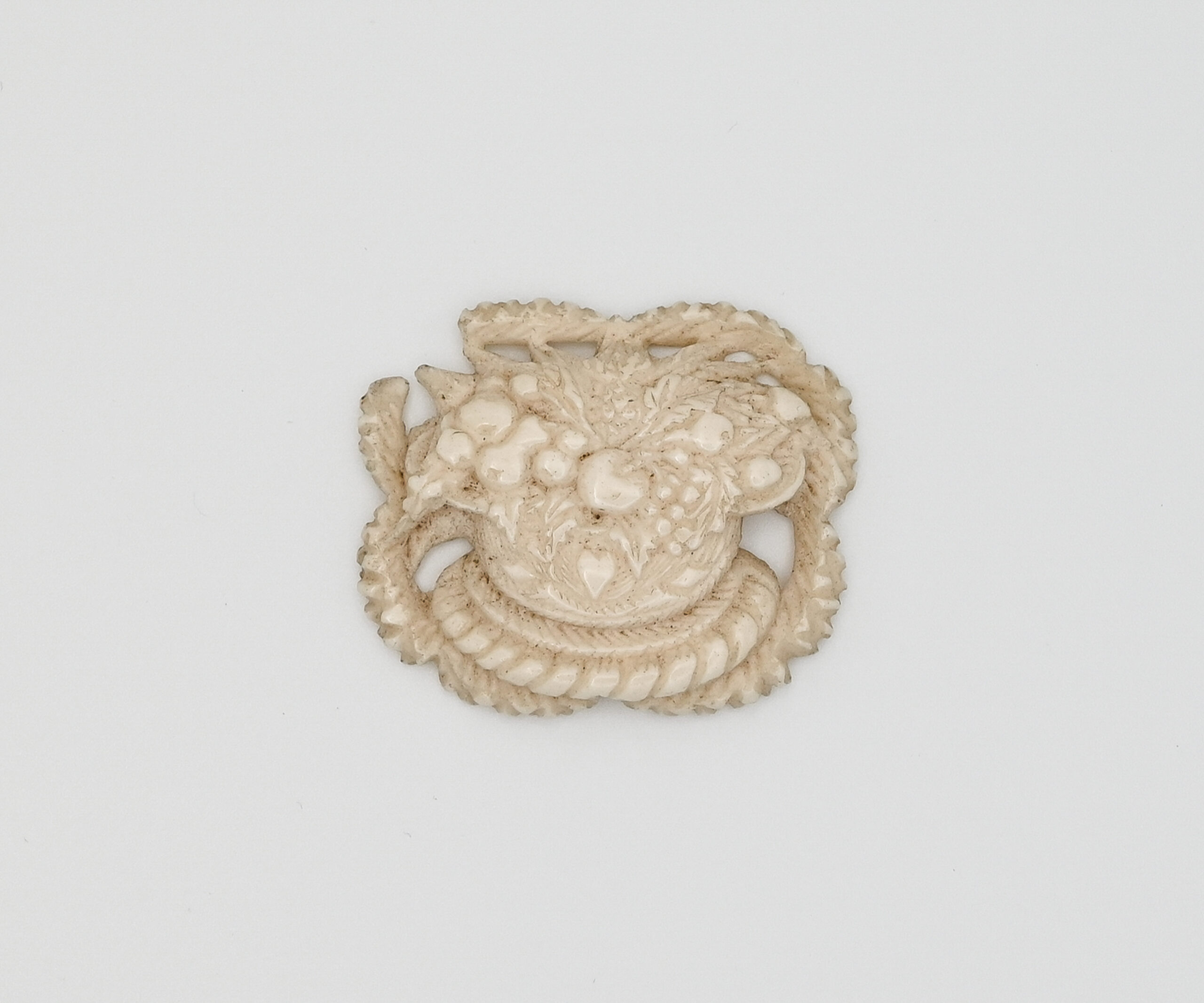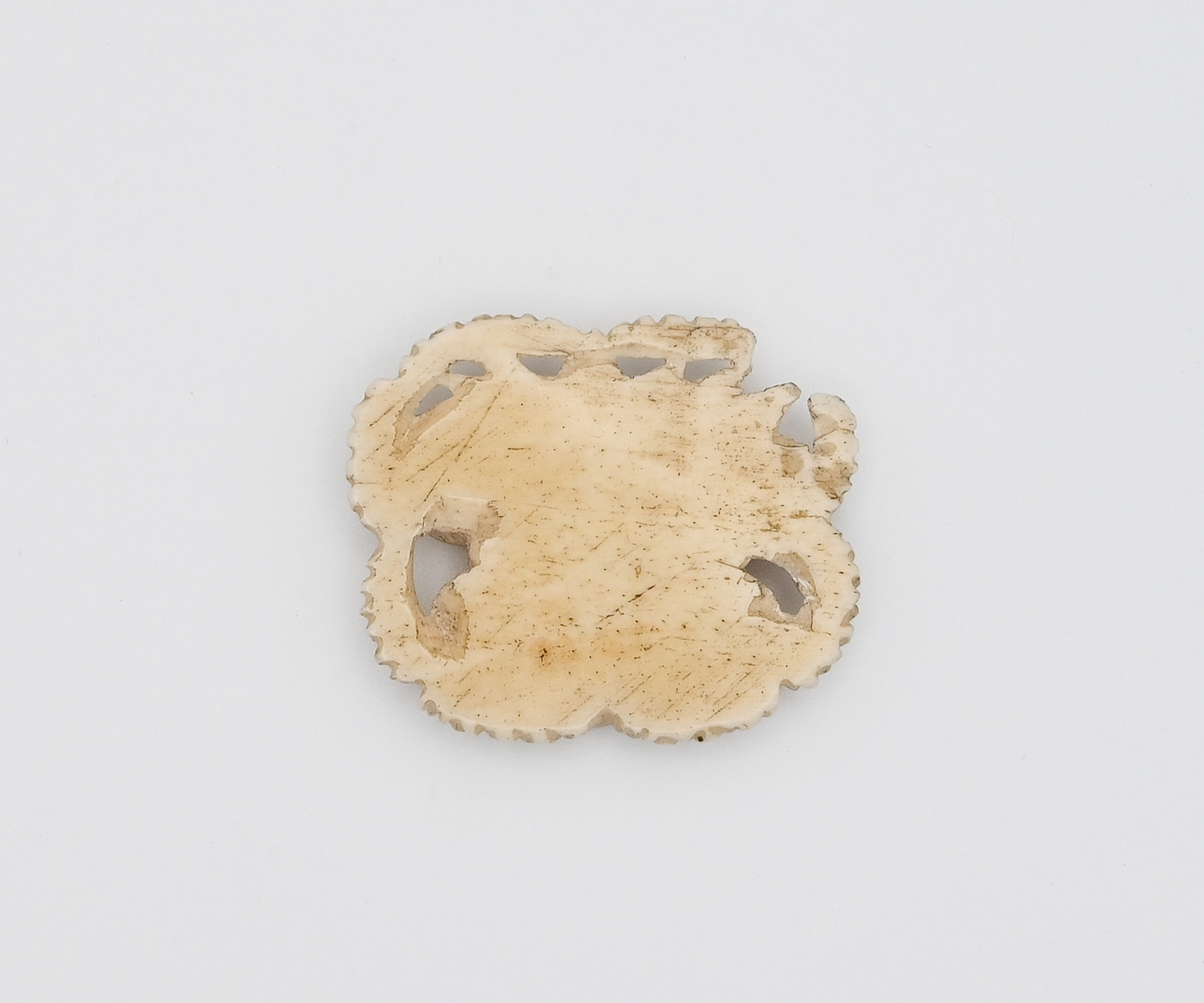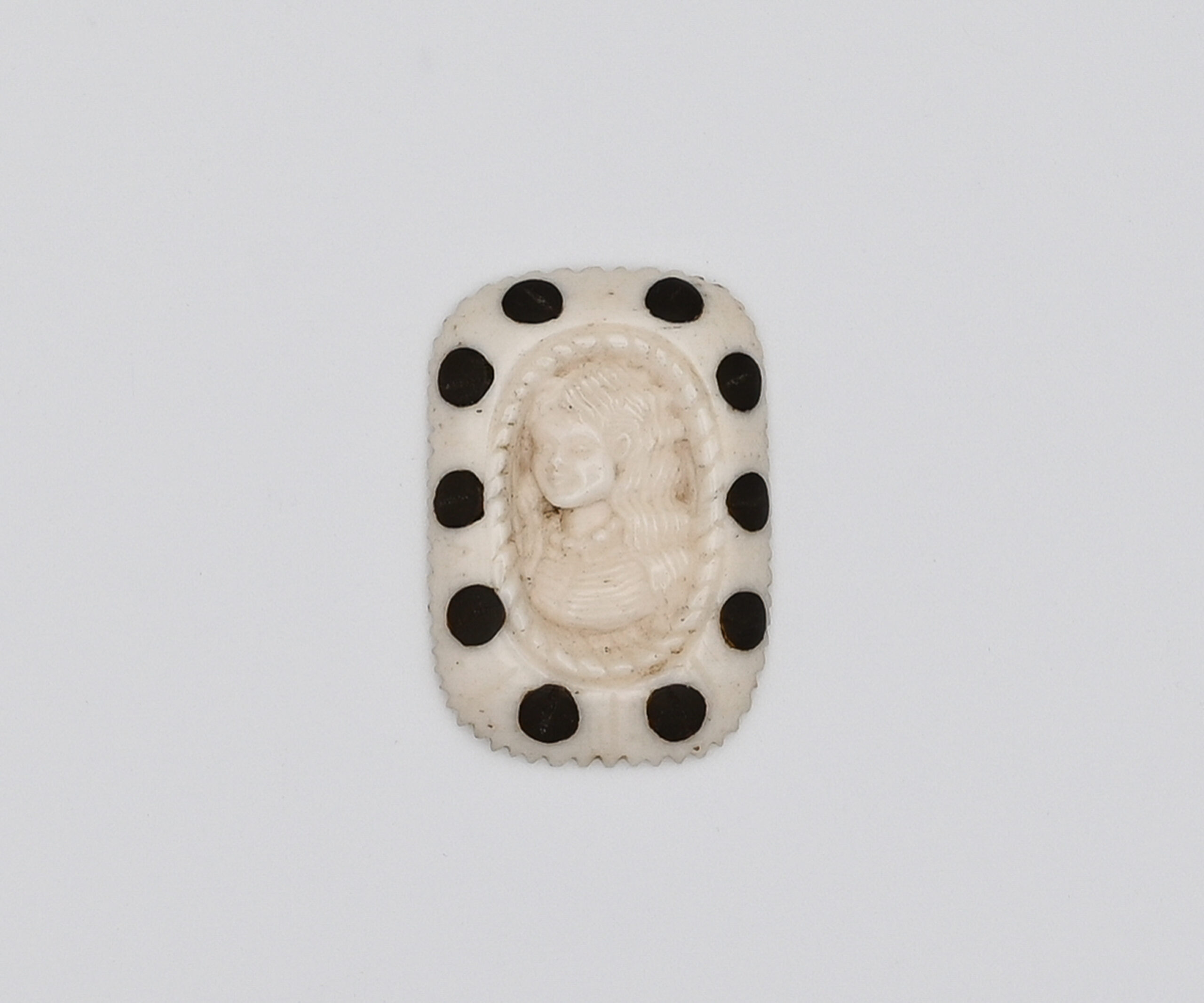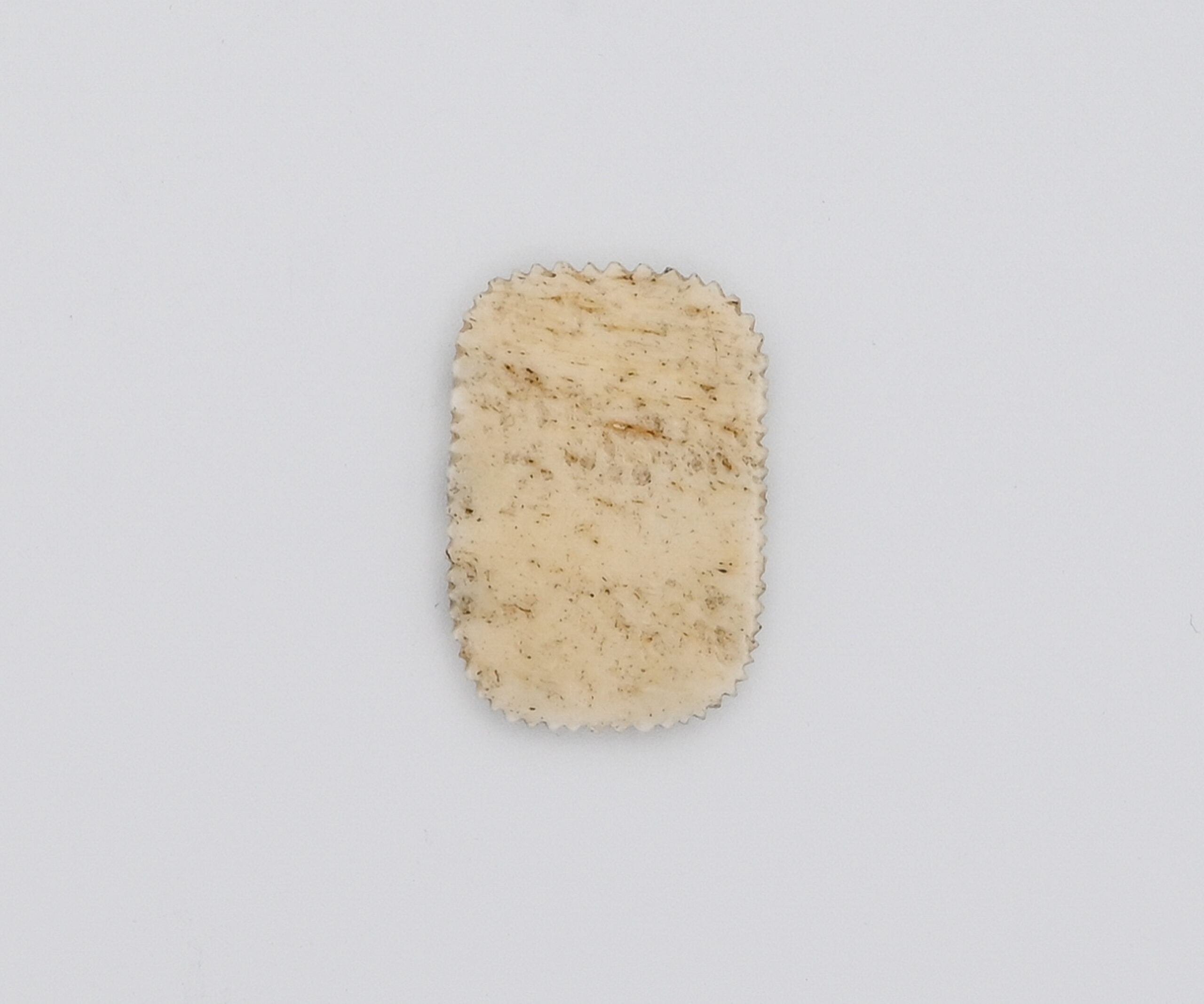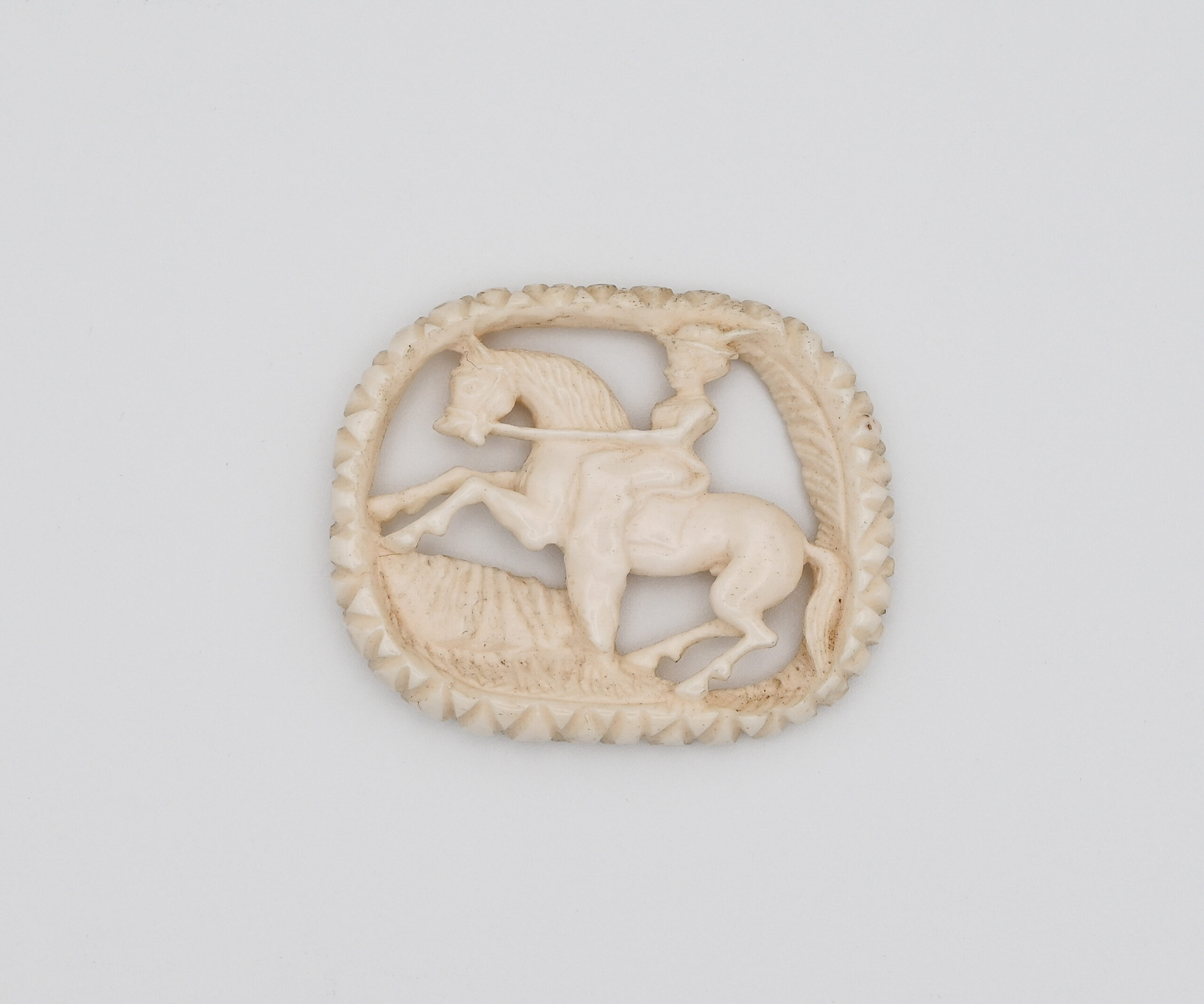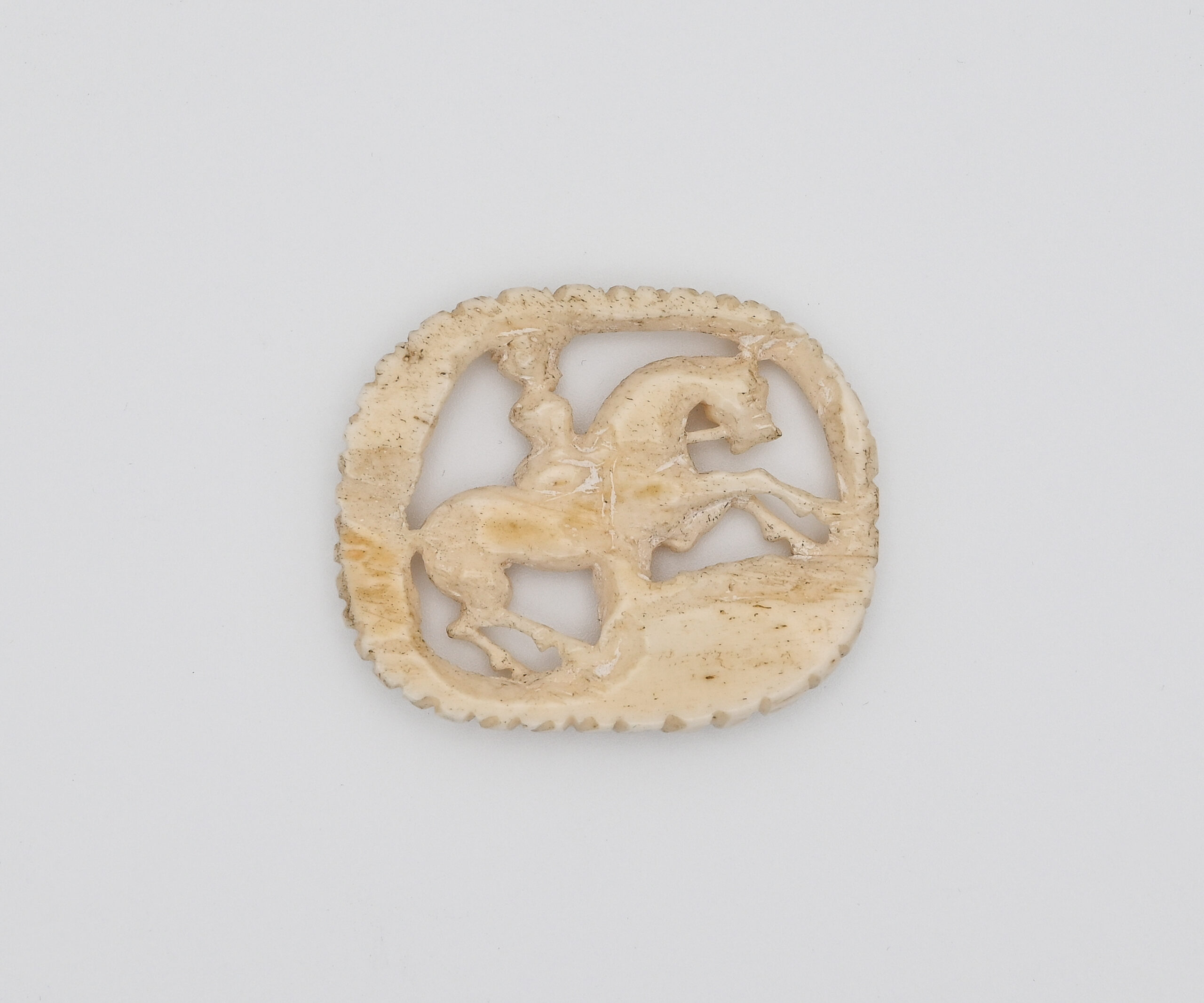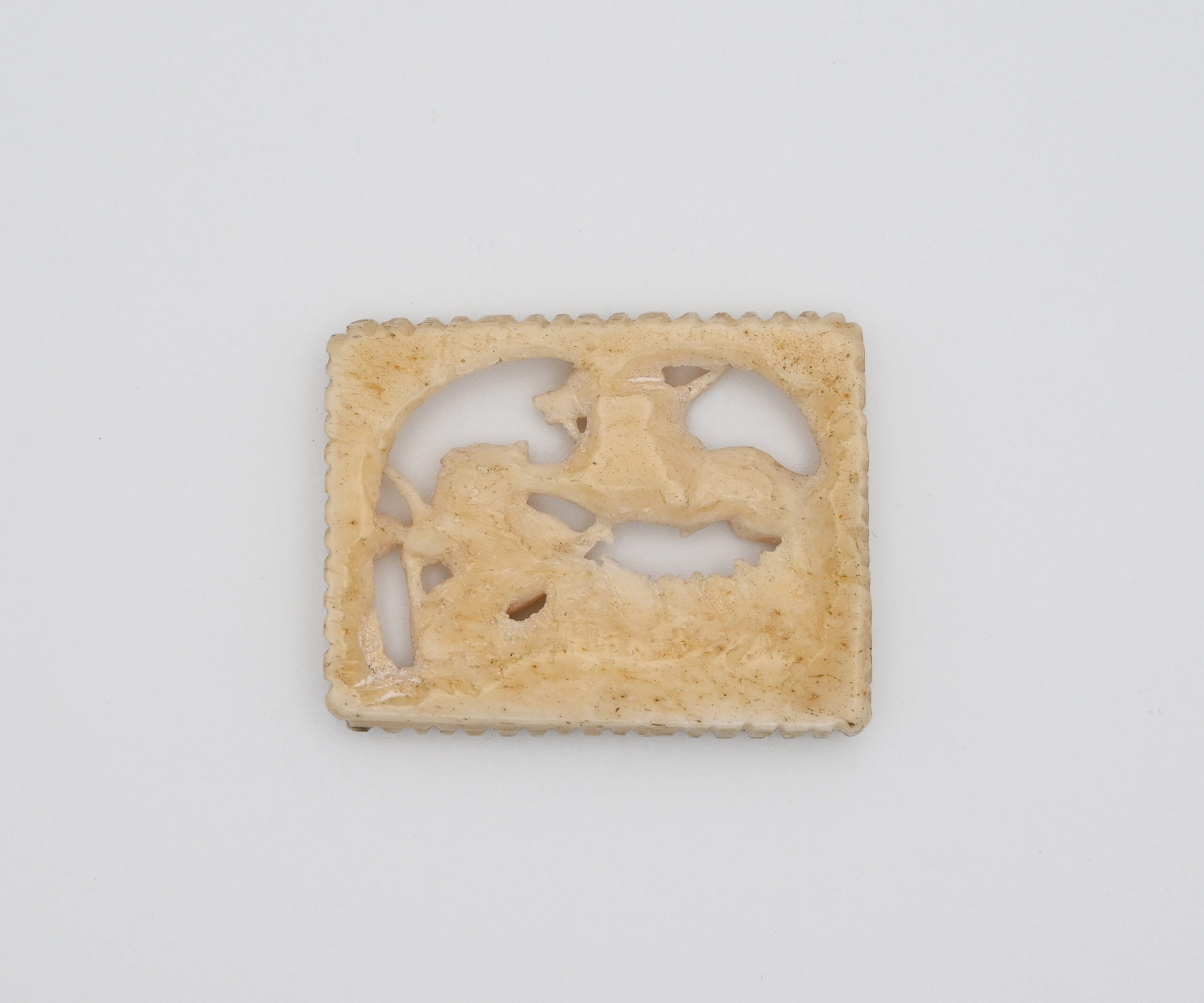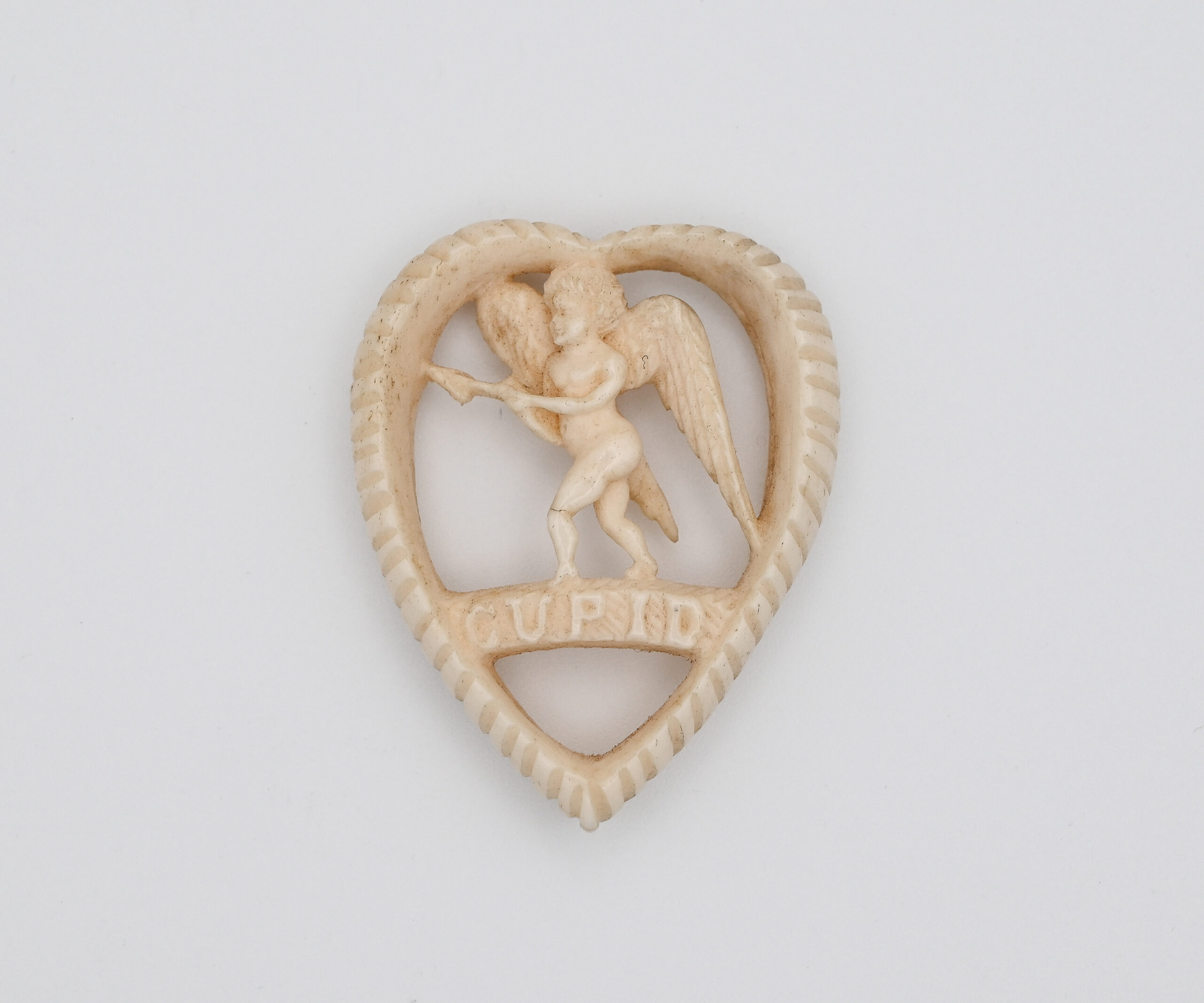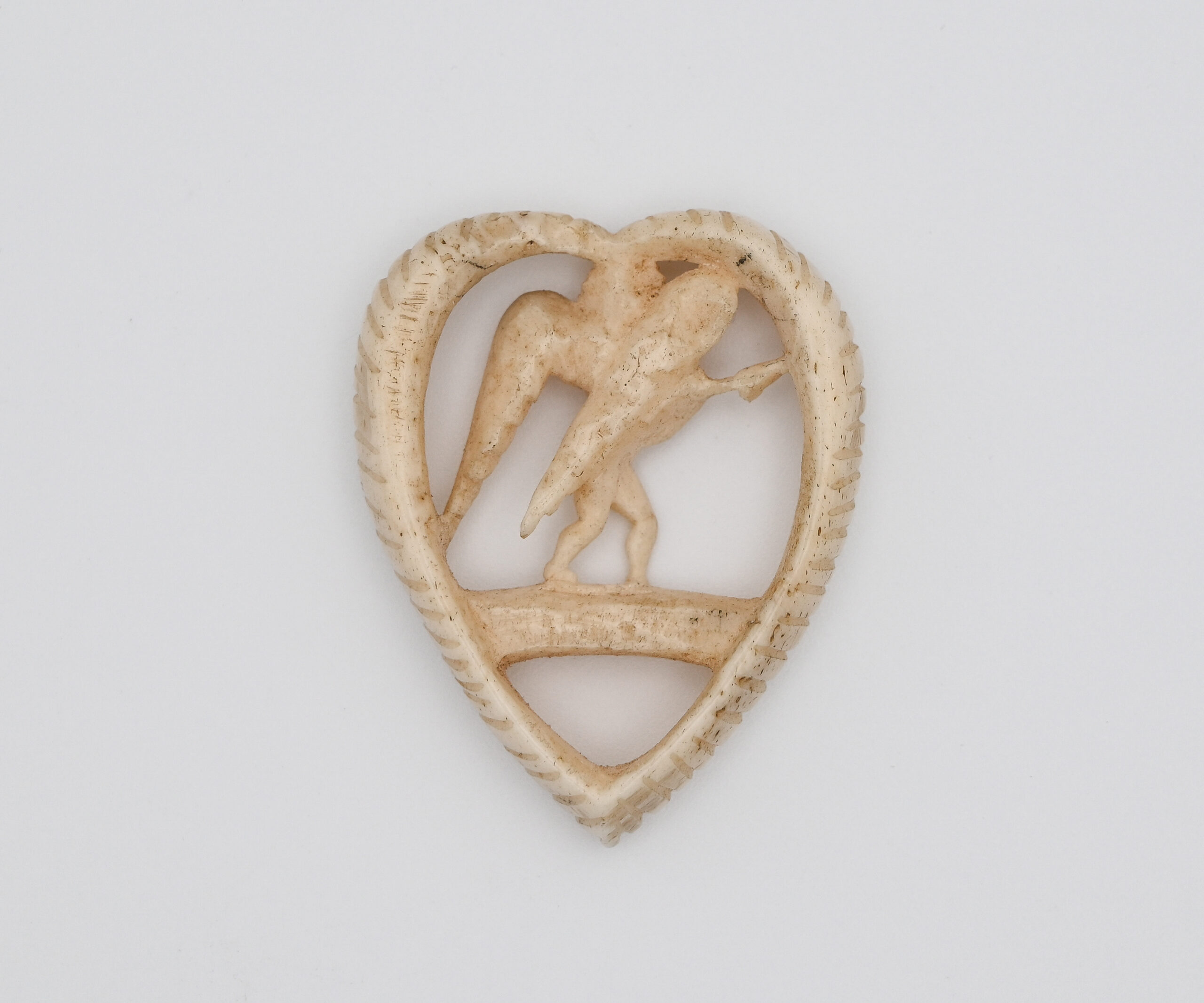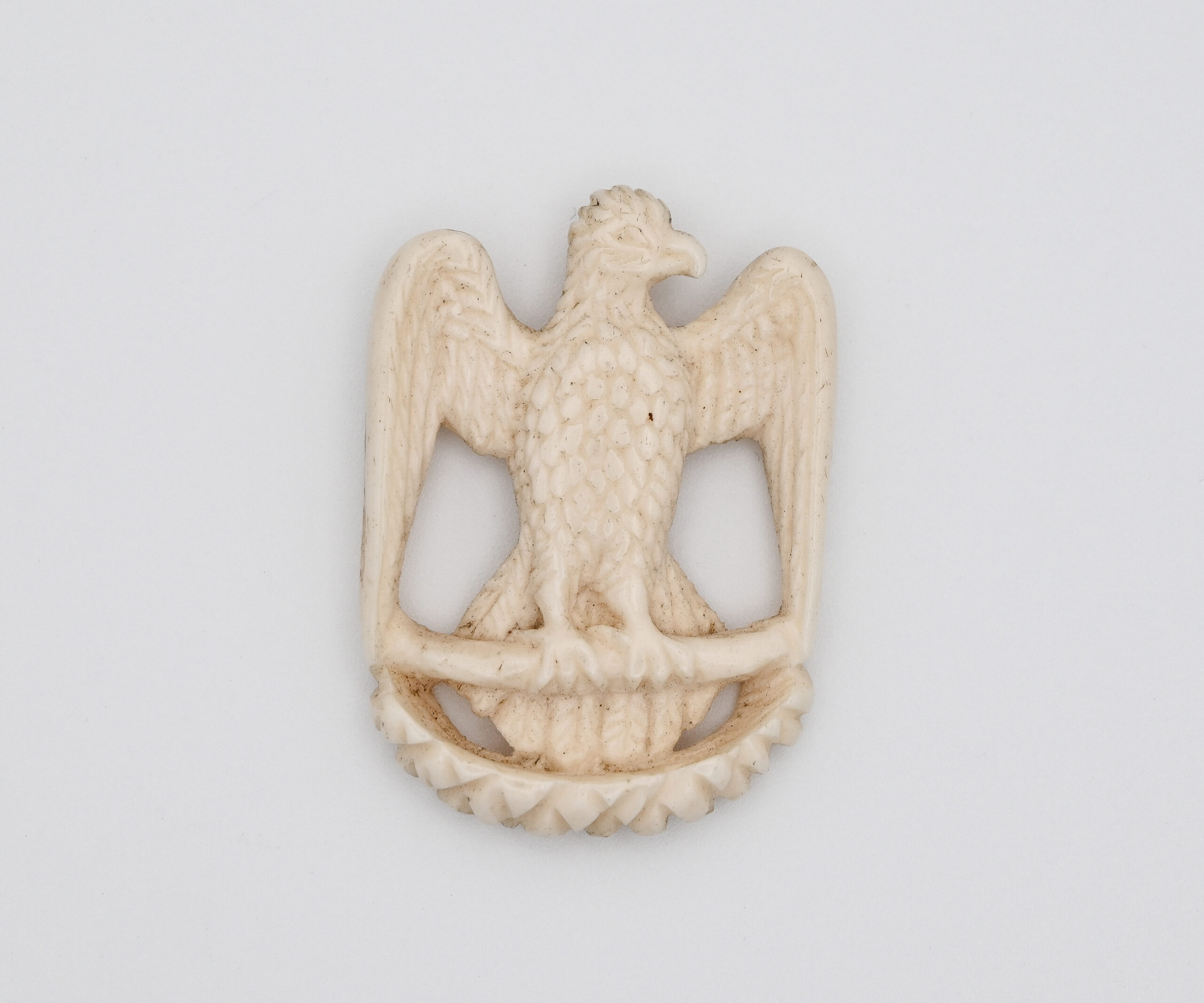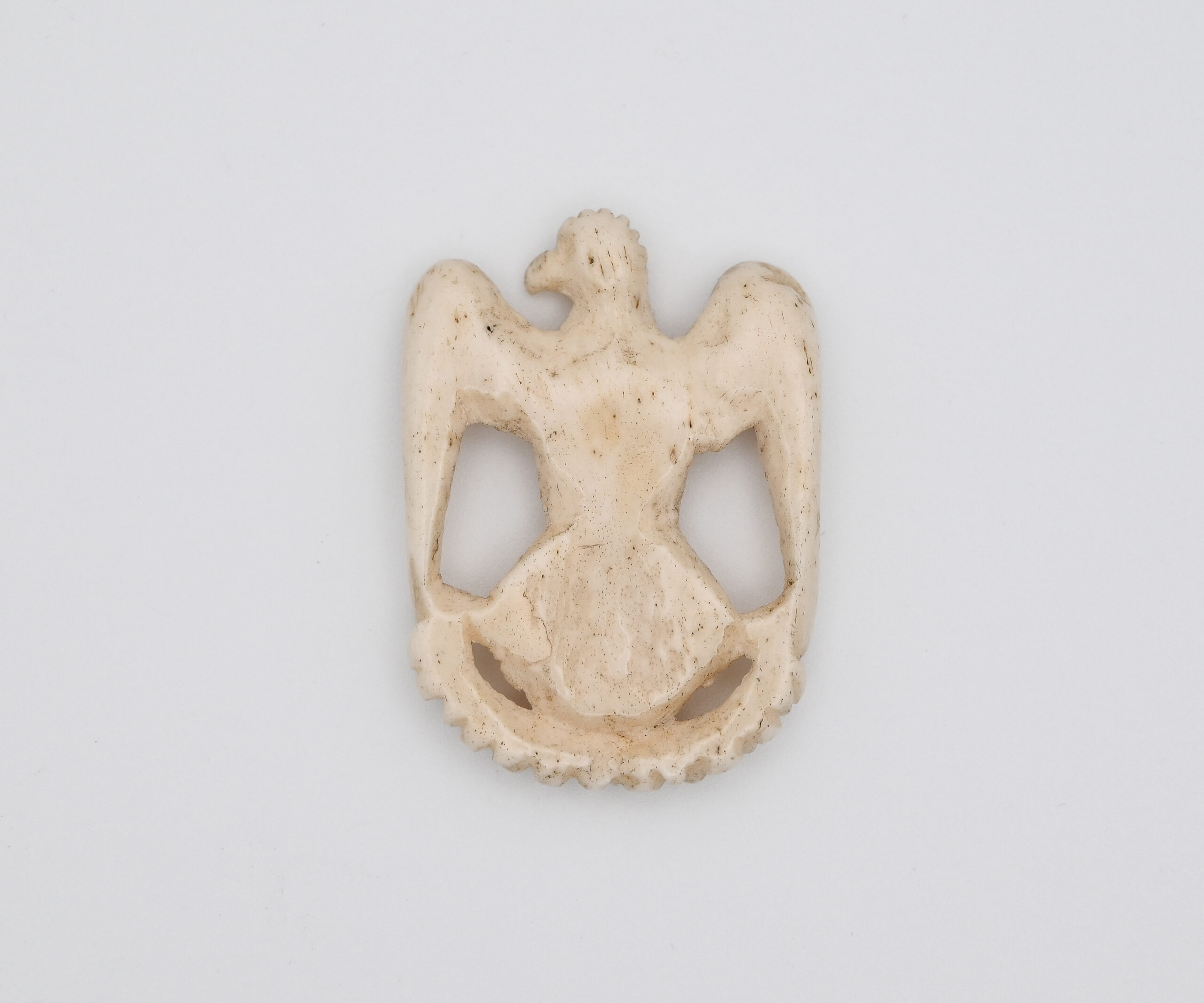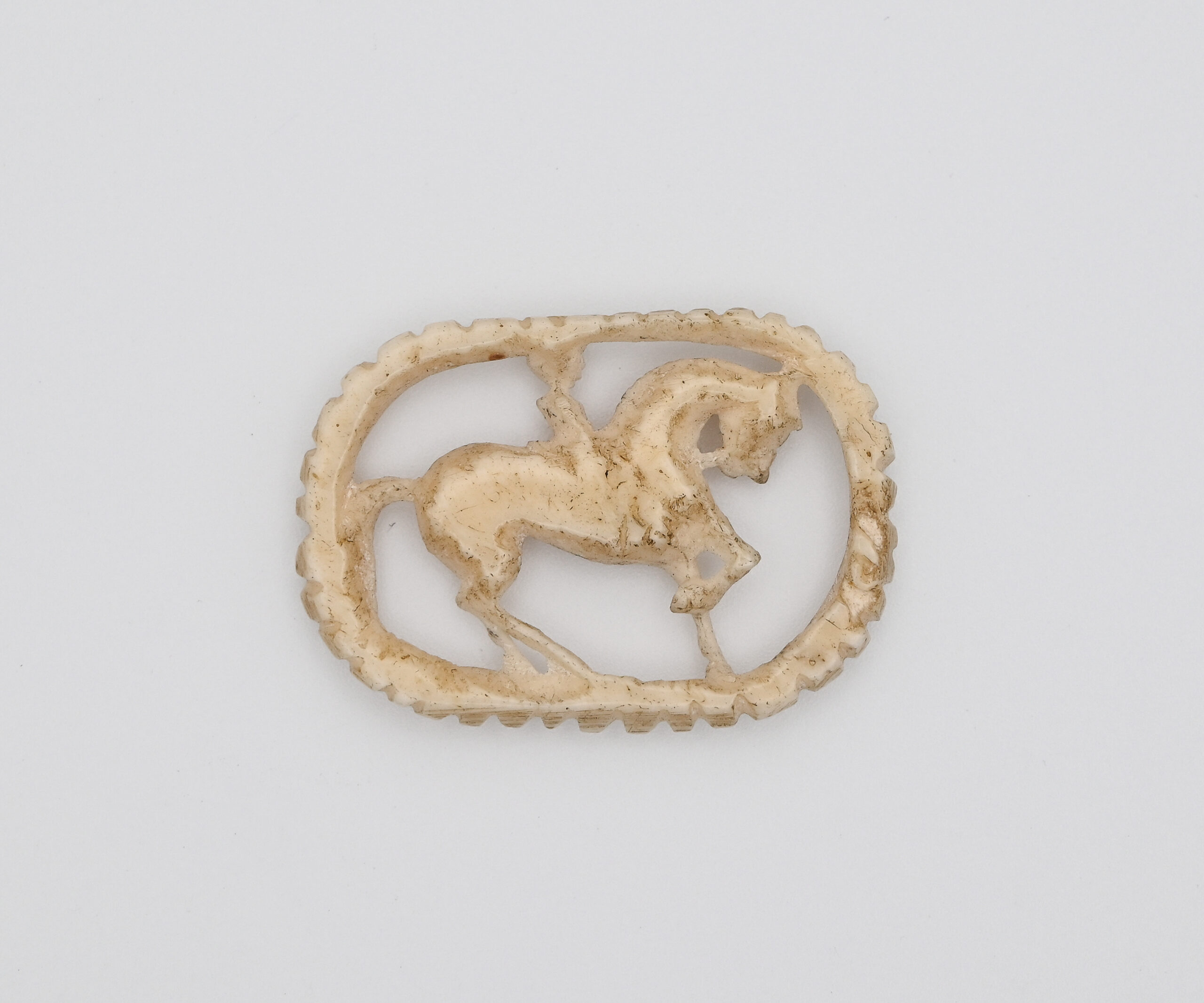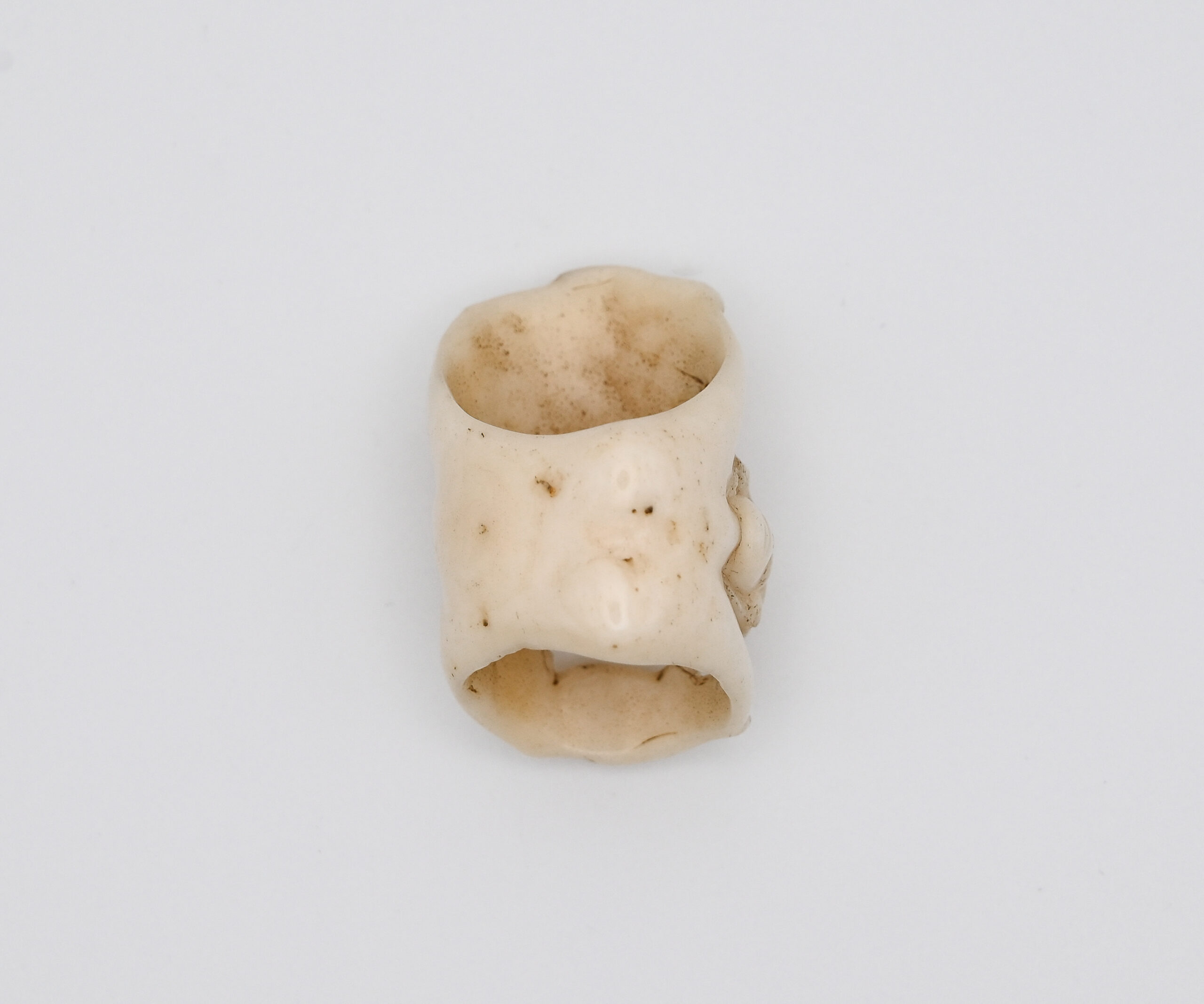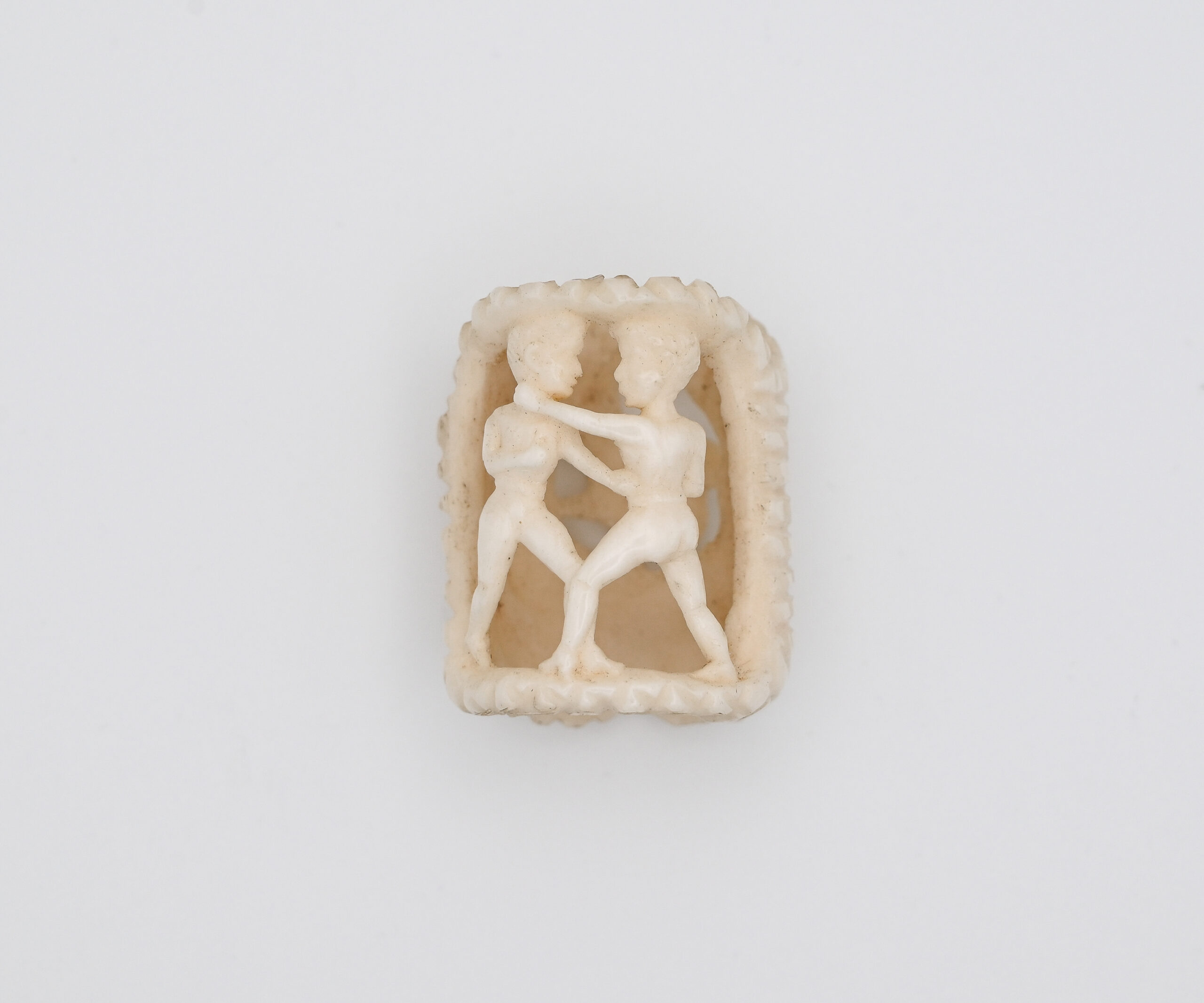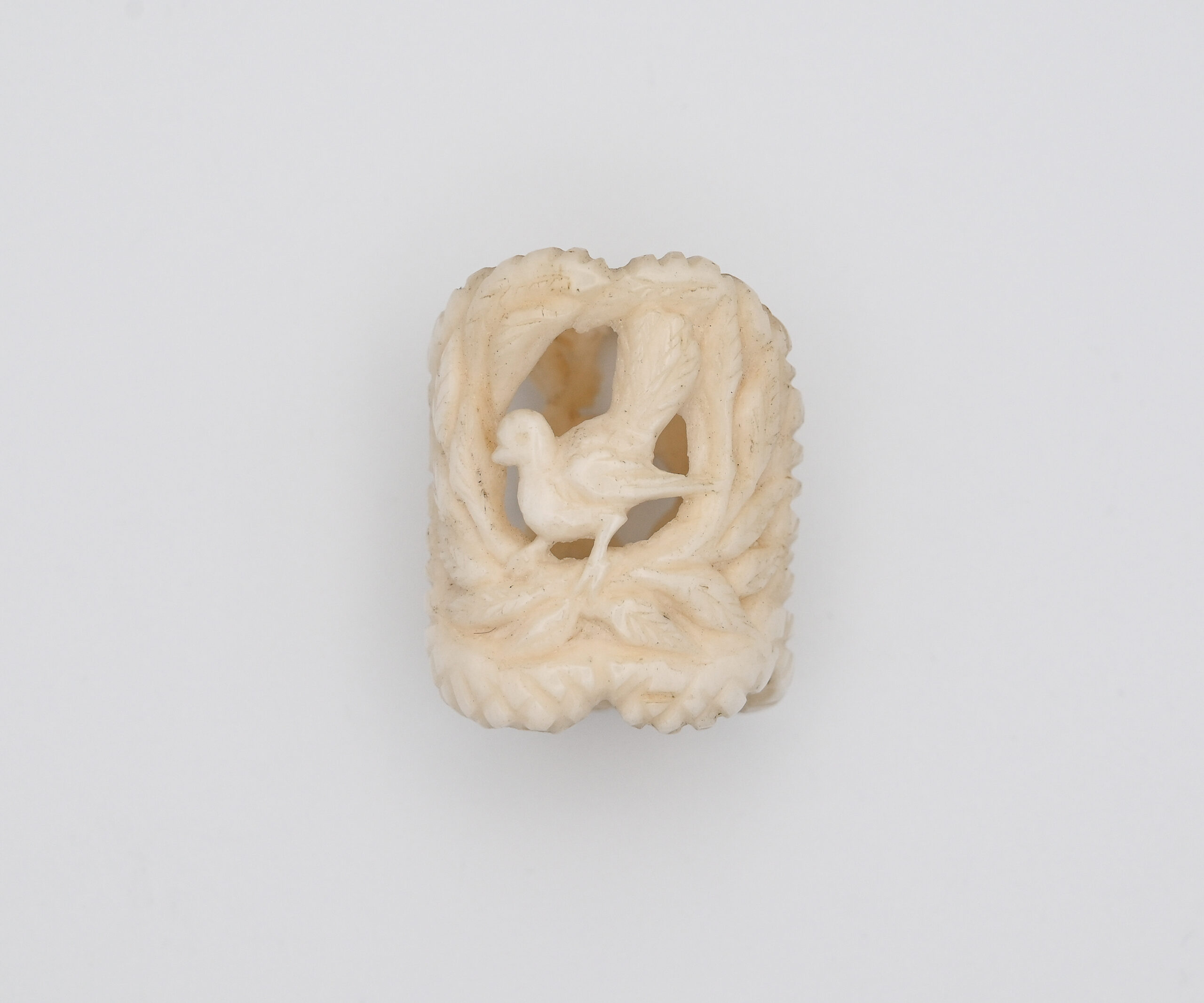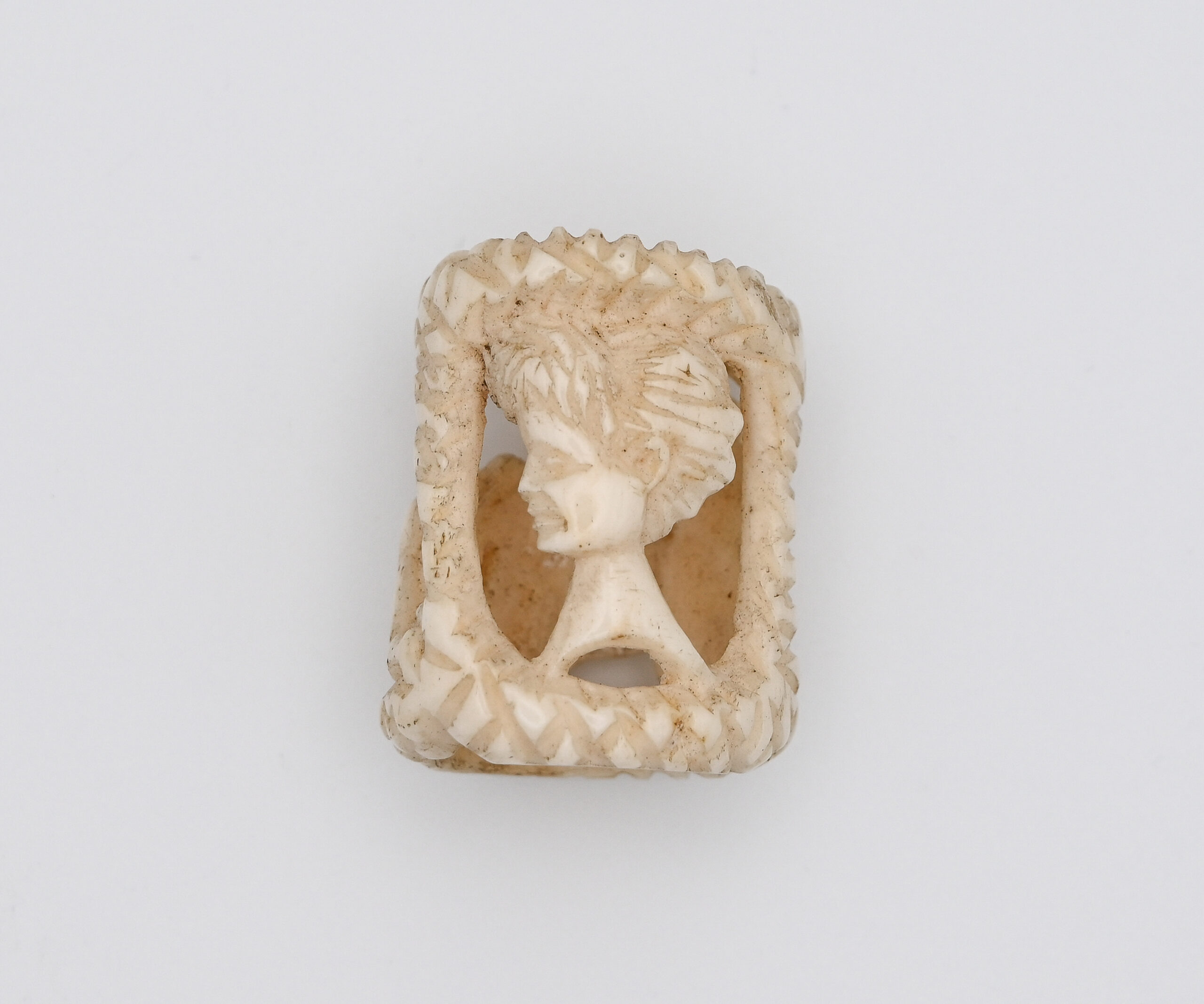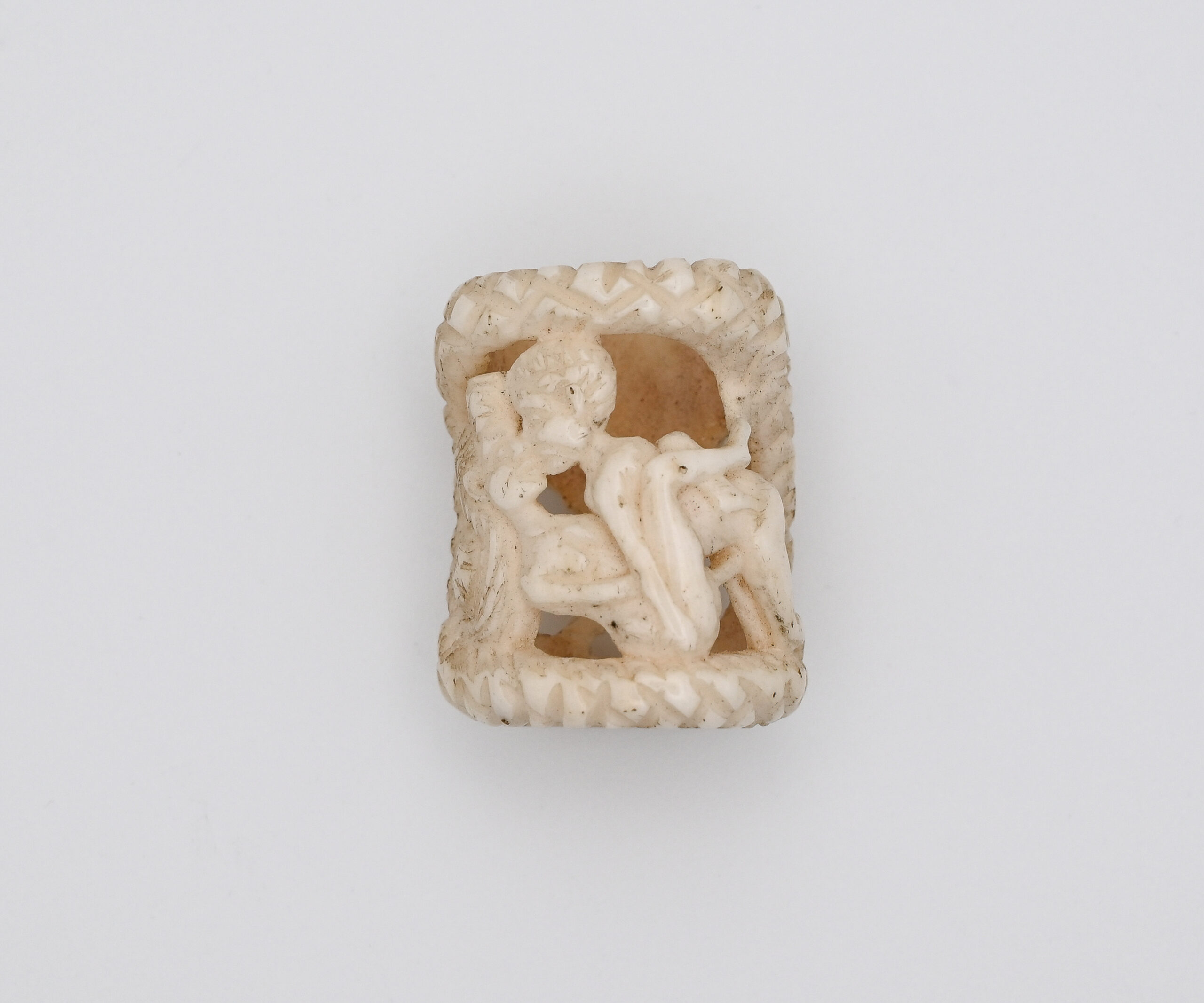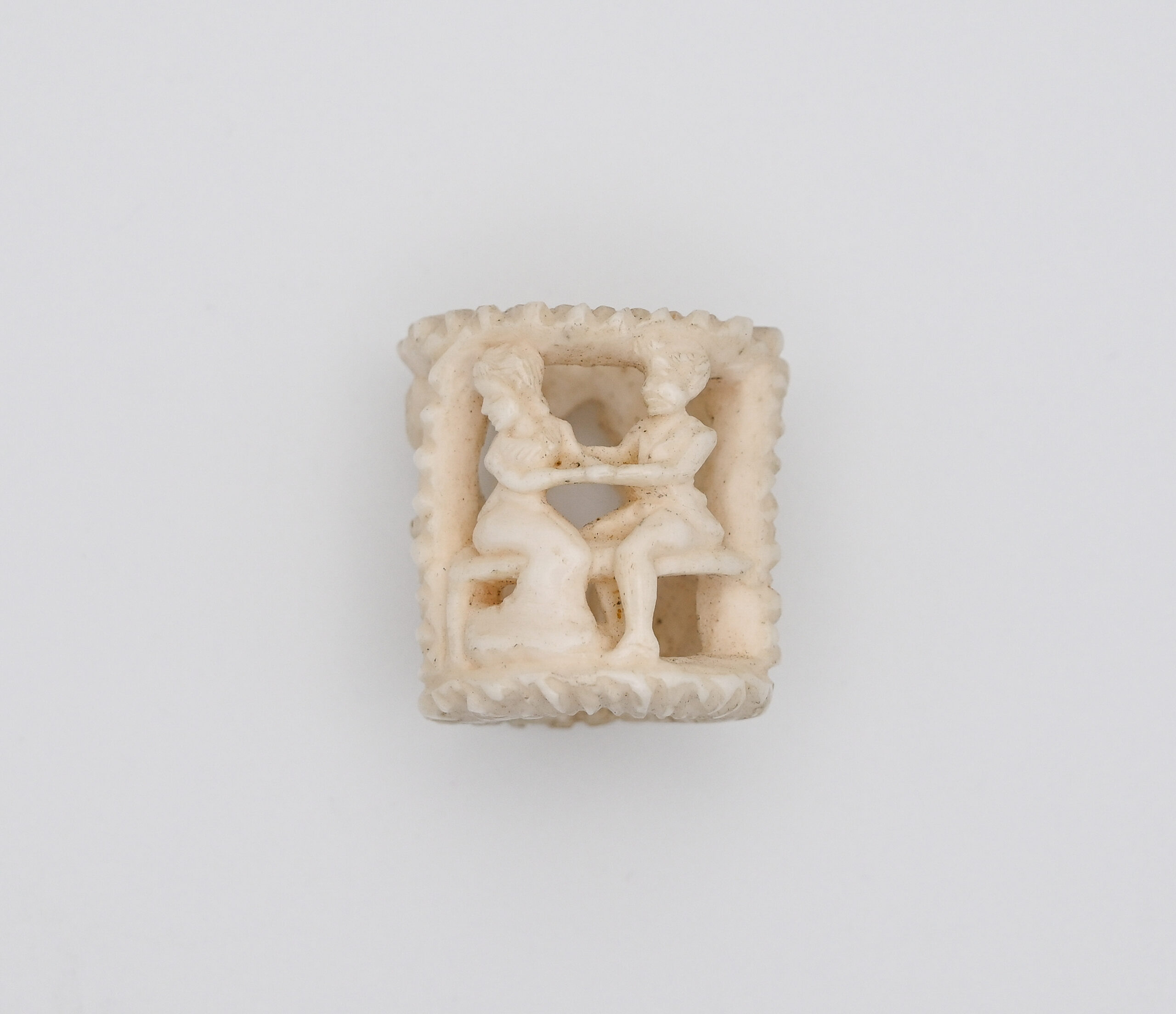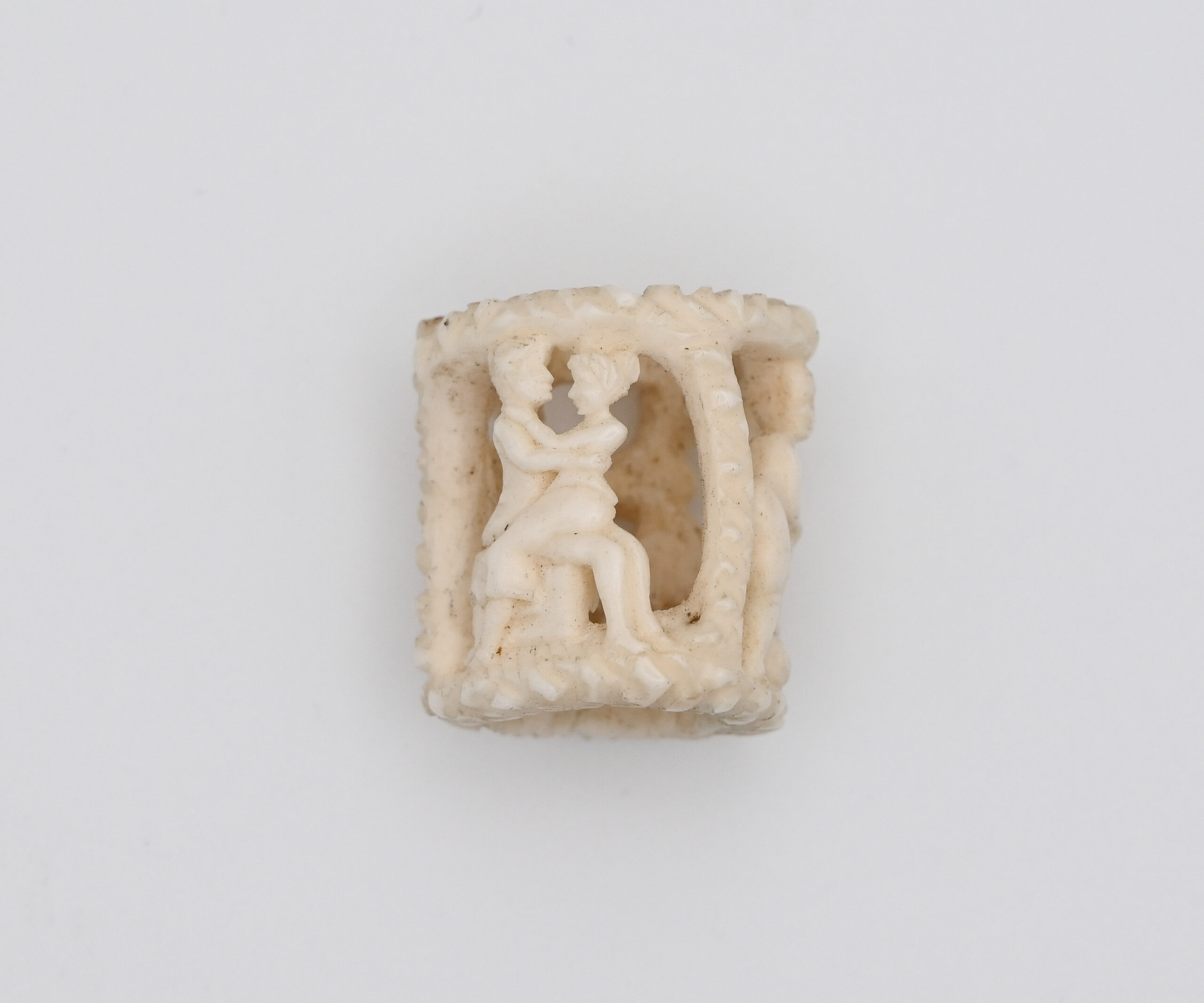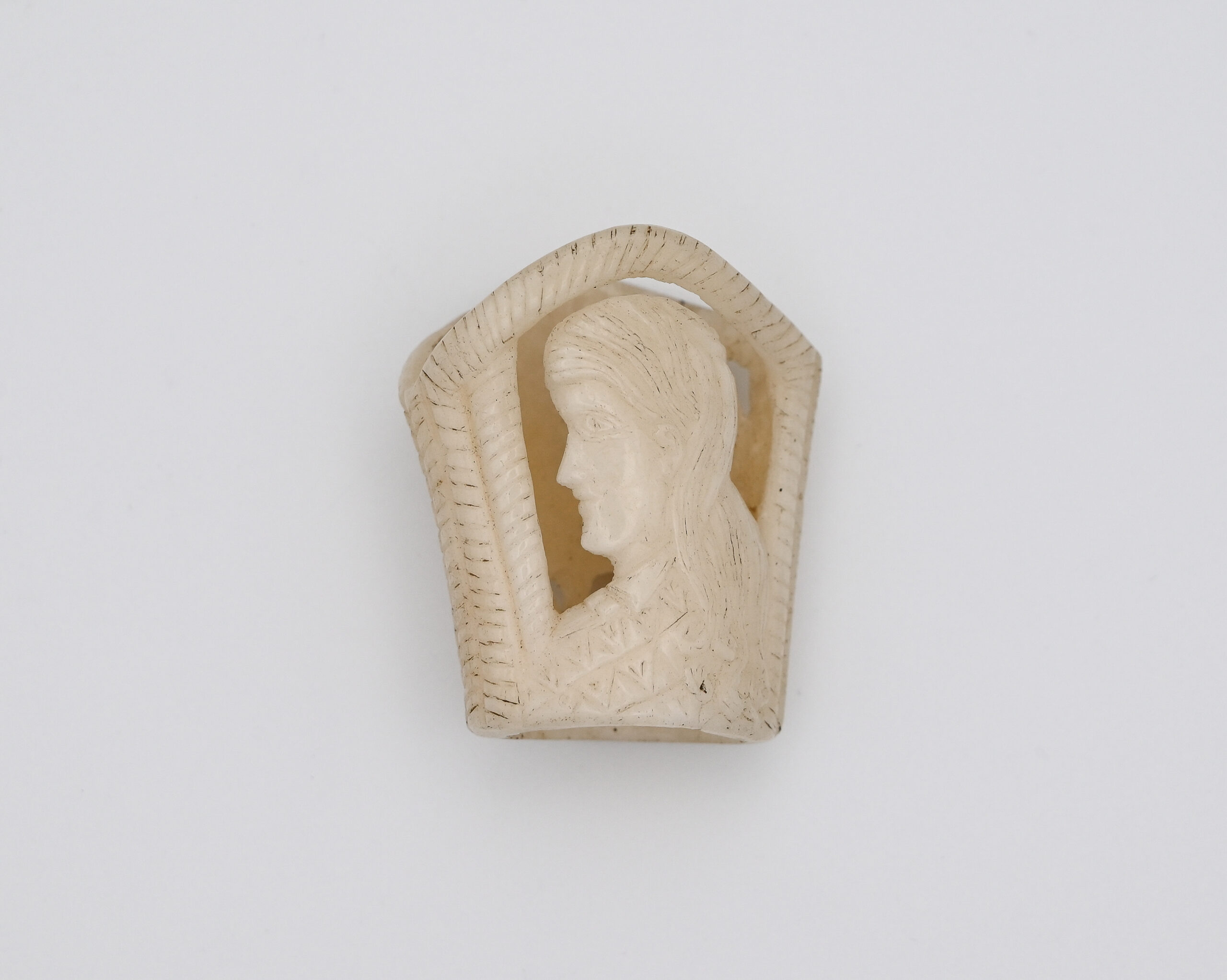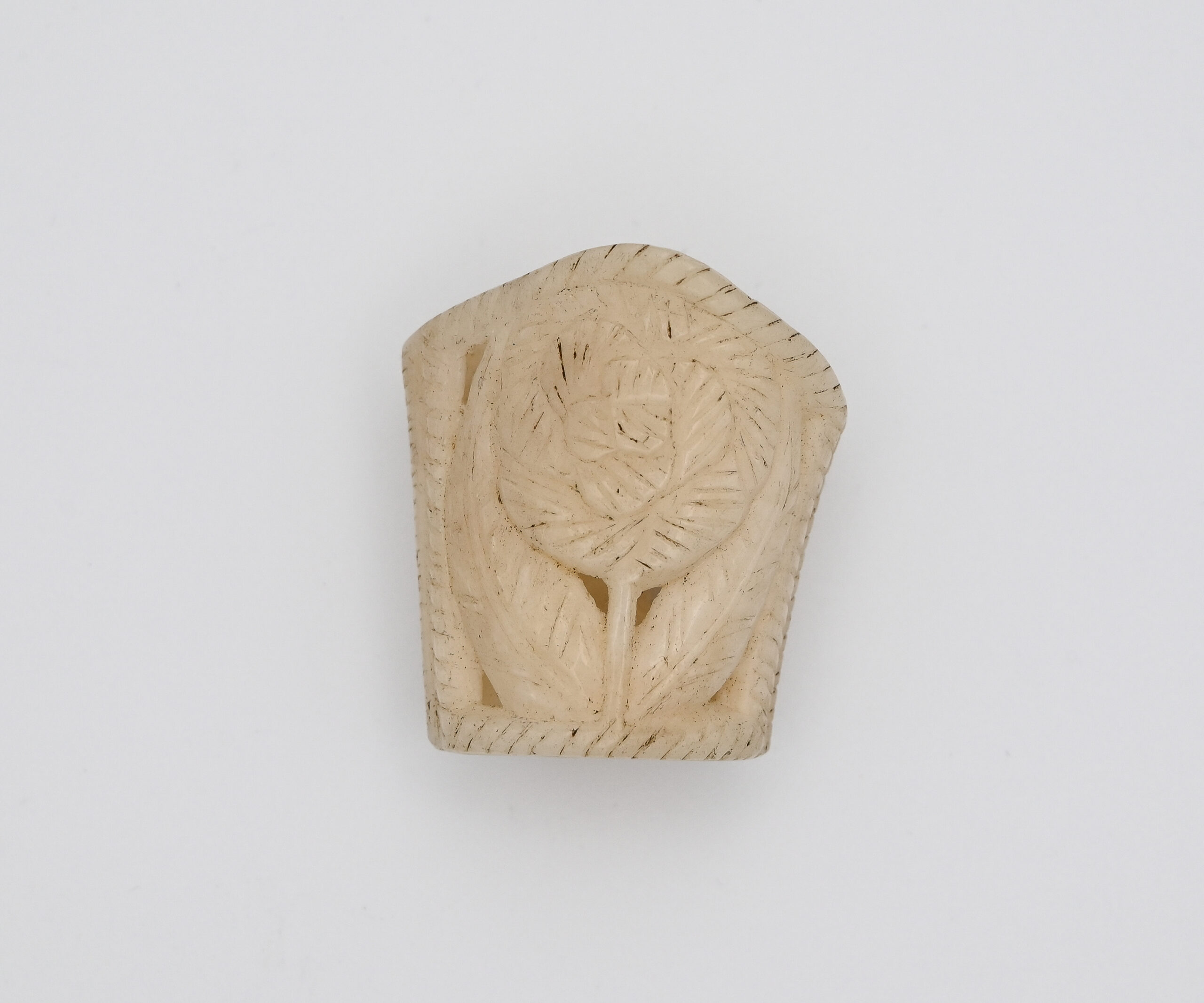Carving for the Screw
Twelve Trinkets Made of Bone
In the 1890s, a Chinese prisoner in Bathurst Gaol was entrusted with a carving tool and used it to create something of beauty. Applying either traditional ivory-carving skills or training received during incarceration, he created twelve delicate trinkets made of bone.
Seemingly taking inspiration from Western symbols rather than Chinese motifs, some examples depict a cupid’s arrow, a seated rider, and a cornucopia of fruit. Their dainty size suggest they were intended to be used as brooches or hair ornaments.
They were given to Warden Banff Tucker, one of the gaolers at Bathurst. Acting under the instructions of the NSW Comptroller-General of Prisons, gaolers had been building Bathurst Gaol over the years into a ‘hive of industry’ which provided industrial training and elementary education.
Completed in 1888, the gaol had 803 cells and ‘commodious workshops.’ The prisoners served their time in the workshops doing carpentry, bookbinding, or cutting and polishing marble that was quarried in the surrounding districts. Offenders with skills in carving and stone masonry were sent there to produce marble mantelpieces which became a signature item produced at the gaol.
Possibly made during recreation time from mutton bones leftover from a meal, carving these trinkets may have helped the now-unknown prisoner to pass the time while he did his time.


